A Taste of Morocco: 9 Local Dishes to Try
Morocco offers a dizzying array of cuisine to enjoy - reason alone to visit this unique North African country.
Typified by spices such as cumin, saffron, paprika and chilli, Moroccan cuisine is fresh and usually very healthy, combining chicken, beef and lamb with vegetables including potatoes and carrots.
Olive oil and bread are ubiquitous accompaniments to tagine, bissara, and many other dishes.
Barbecued fish - particularly trout - are also common, as are more challenging (for Brits!) dishes such as boiled snails and cow-and-lamb head sandwiches.
Those with a sweet tooth have innumerable sugary snacks to sample, including chebakia and halwa.
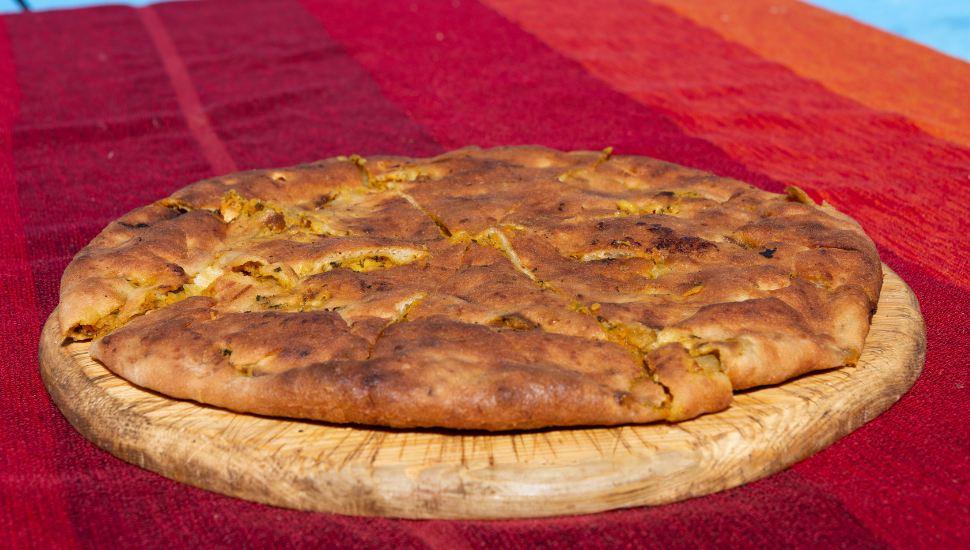
Medfouna (Berber pizza)
Also known as Berber pizza, medfouna comprises two sealed fluffy, flatbreads filled with beef, beef fat, vegetables and spices (cumin, paprika, salt and pepper).
You can watch these being prepared by hand right across Morocco, and you can request egg and vegetable types if you don’t eat meat.
Out in the countryside medfouna is sometimes prepared on makeshift fire, giving the dish its other name - campfire pizza. Here you'll commonly find the lamb variety.
Comparable to stromboli or calzones, medfouna is a must-try dish on any visit to Morocco.
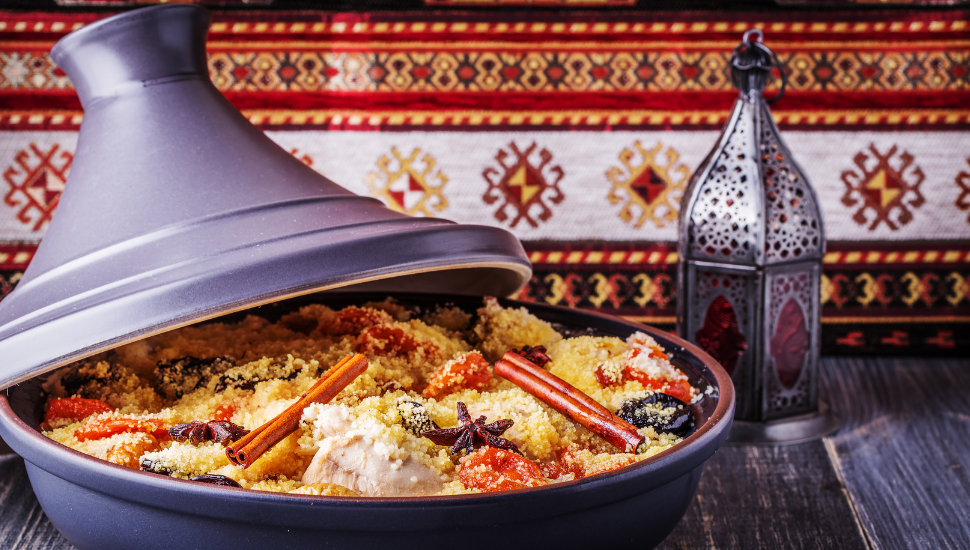
Couscous
You'll see elderly ladies - matriarchs - preparing baskets of couscous right across the country.
This fluffy wheat-based staple is often served with chicken, beef and vegetables including pumpkin, carrot and potato - all simmered in a spice-packed broth.
Often served in a huge wooden dish, couscous is traditionally eaten in a group while sitting on a rug in a tent - although you can easily find it in a regular restaurant too.
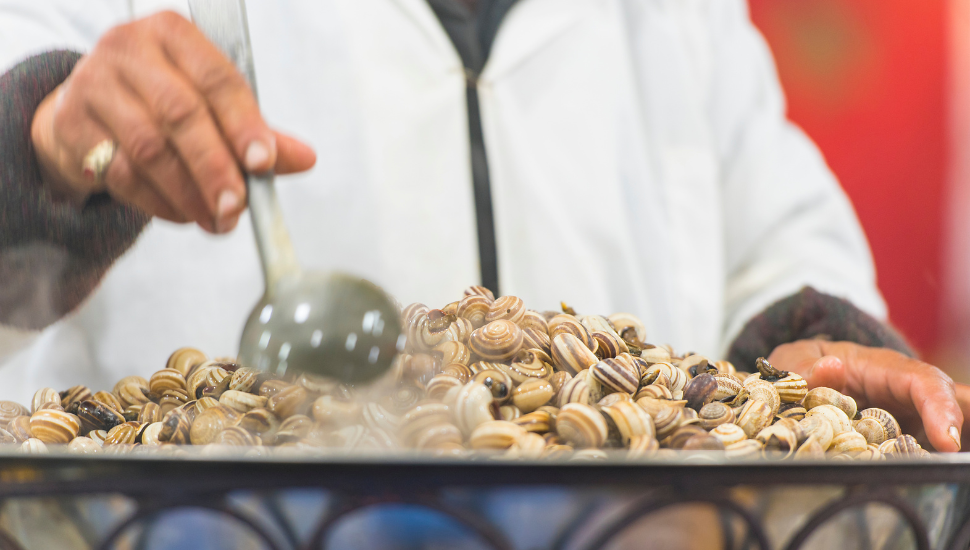
Babouche (snails)
Snails have never really caught on among Britons, but they are a common sight in the night markets of Morocco.
Traditionally, the snails are fed only flour to flush out any toxins, before they are boiled up in a hearty broth of many herbs and spices.
You'll see these shelled creatures piled high in dishes, from which they are scooped into smaller bowls for consumption.
The snails themselves have a smooth creamy flavour inside thanks to their simple flour diet, while their exterior is somewhat chewy.
Even if you don’t count yourself as a fan of snails, they do offer a unique dining tale to offer the folks back home!
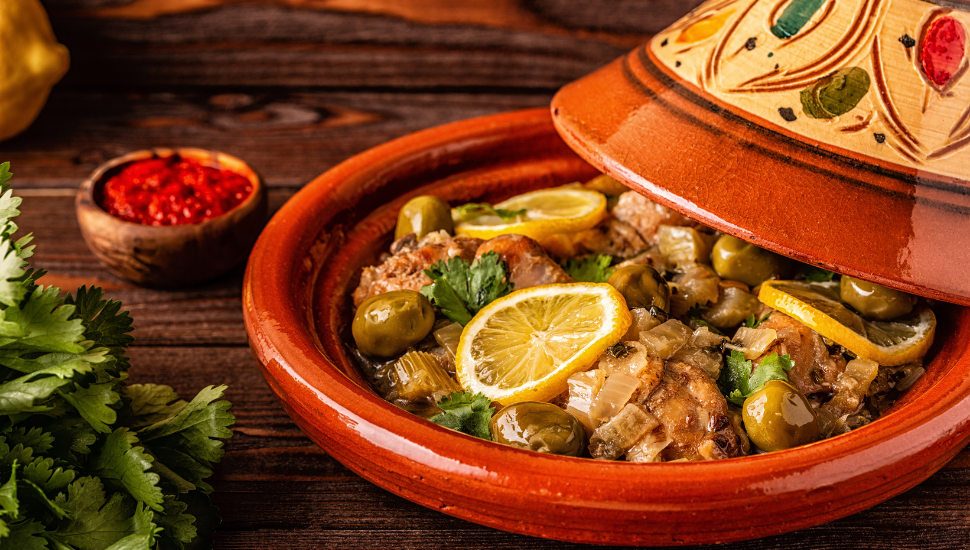
Chicken tagine
Tagine is omnipresent in Morocco, so you're sure to come across it on your travels.
This traditional Moroccan dish is made in a clay pot with a conical lid, allowing flavours from the spices (notably saffron) to infuse into the meat and vegetables (potatoes and carrots among them).
Chicken is the commonest tagine meat. It is marinated in a 'chamoula' of parsley, cilantro, lemon pulp, garlic, paprika, ginger cumin, pepper, saffron water, and olive oil. After wallowing in this delicious sauce overnight, onions are added before everything is placed in the tagine pot for a long simmer.
Once cooked, lemon juice and lemon skins, and olives are added.
Chicken tagine is served everywhere in Morocco, from night markets to high-end restaurants - accompanied by the obligatory basket of Moroccan bread.
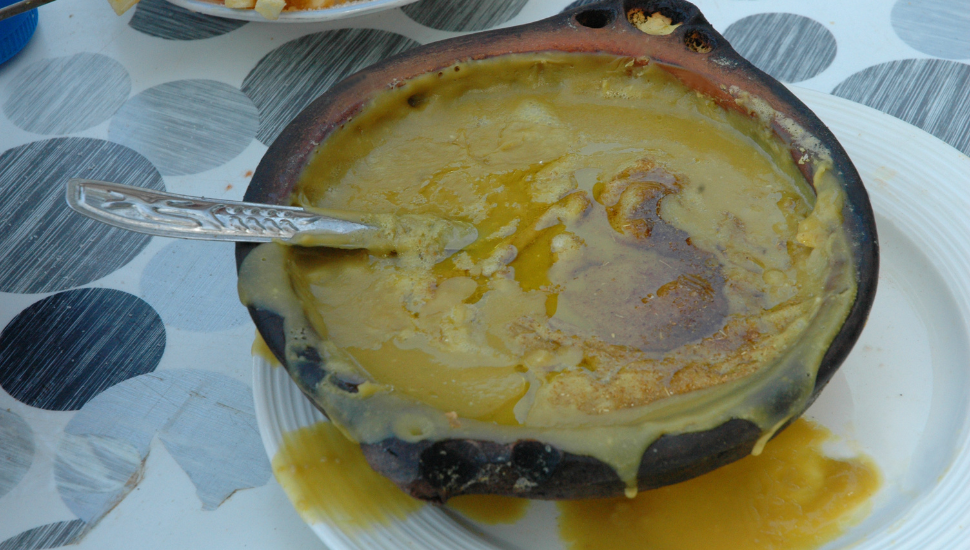
Bissara (broad bean soup)
Down the back streets of Marrakech, Fes and Casablanca you'll find specialist bissara eateries, offering this traditional broad bean mash soup.
Invariably served with a generous splash of olive oil, bissara is usually accompanied with a garlic sauce, also covered in olive oil.
Cumin and chilli are added to taste, and the dish is served with Moroccan-style bread. While this meal is simpler than others on this list, it’s hearty, filling, and ideal for a quick breakfast.
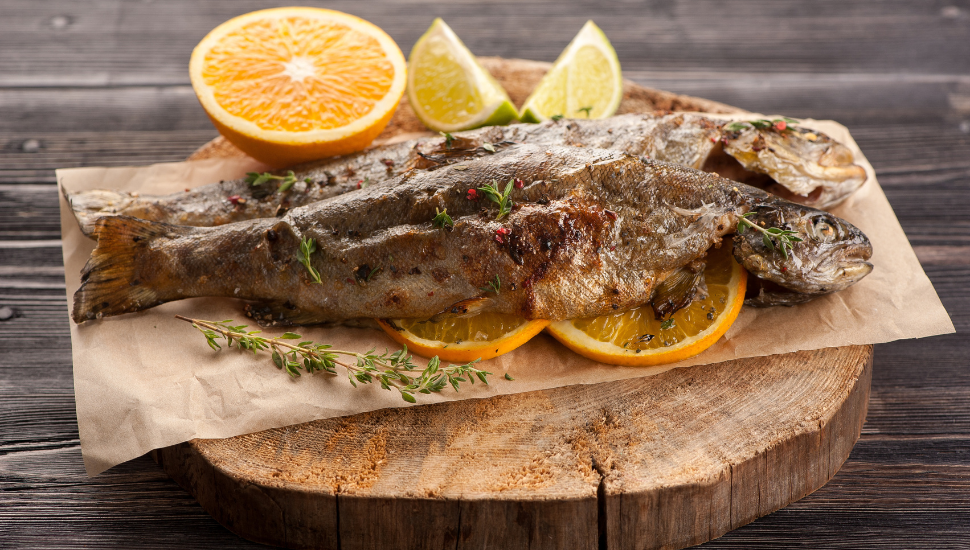
Azrou (grilled trout)
In Morocco trout is traditionally prepared by rubbing a rosemary blend on the skin, adding a spice mix and then drenching it in olive oil. It is then wrapped in aluminium foil and placed over a grill.
Once cooked, fresh lemon juice is added before the flesh is removed with bare hands, dipped in harissa (chilli sauce), and consumed.
Trout farming is common in Morocco. Aim to get your trout from reputable farms who keep their fish in spring water.
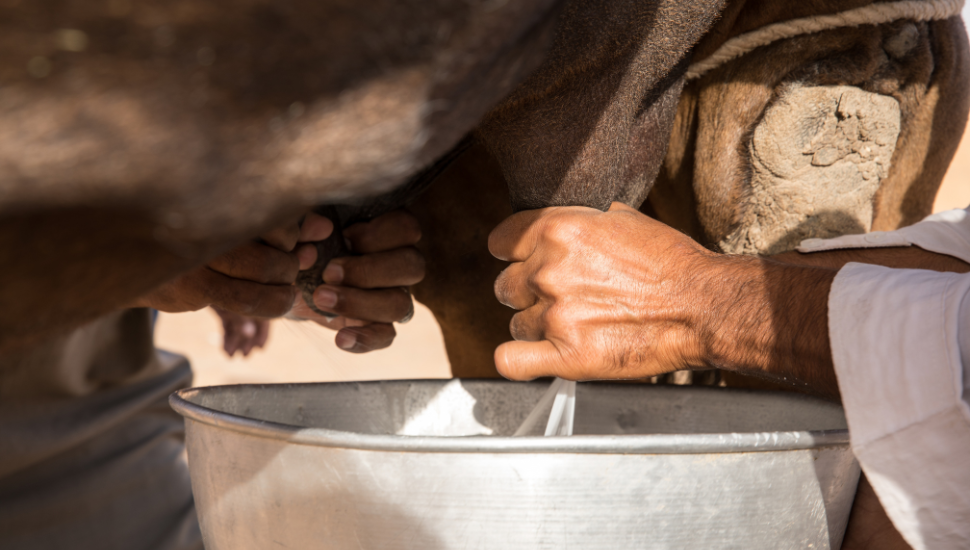
Merzouga (camel milk)
You may not, admittedly, have travelled to Morocco expressly to sample milk from a camel, but it's an option for the more adventurous among us.
The first hurdle is to locate a camel owner who offers this beast's milk - more likely in rural parts of Morocco.
It's best served still warm from the camel.
Taste wise, camel milk is comparable to that of cows, and has about the same calories, protein and carbohydrate content.
While obtaining camel's milk in the UK is rather expensive, with one producer asking £20 per litre of the stuff, out in the sticks of Morocco you'll pay a lot less.
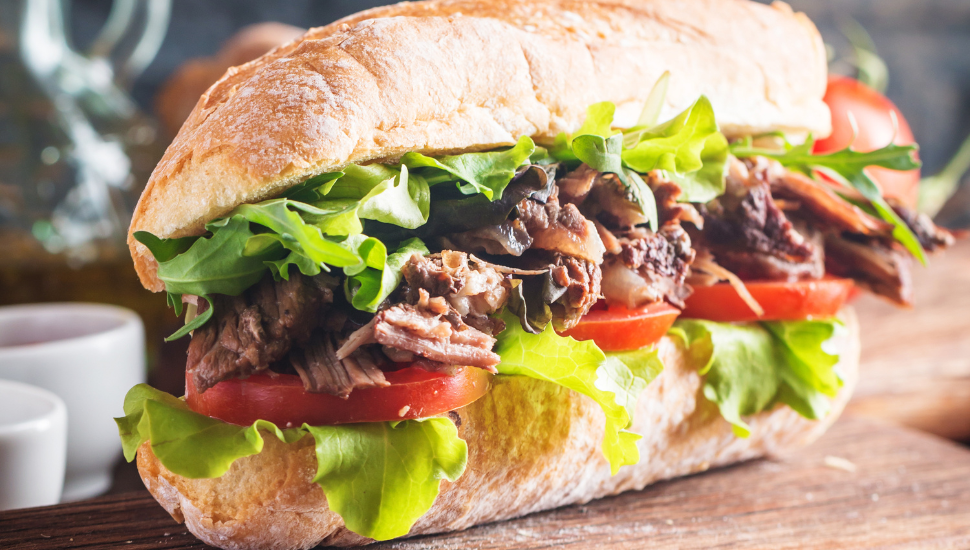
Cow-and-lamb head sandwich
Another bite not for the faint-hearted is the cow-and-lamb head sandwich.
You'll doubtless glimpse sellers of this unique dish with their eye-catching "wares'' on display.
Small chunks of the meat are steamed before being served in a thick bread sandwich.
Seasoned with cumin and chilli, the meat is somewhat chewy but very tasty.
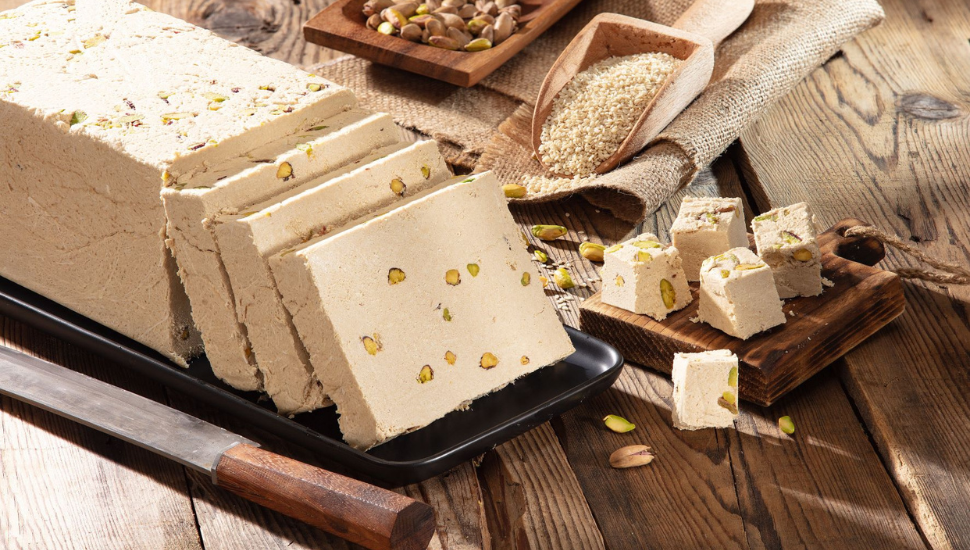
Halwa
One of Morocco's best-known sweets is halwa, a hand-made nougat-like sweet often filled with almonds.
These crunchy treats offer a healthier way to get your sucrose fix, since they are made with minimal sugar.
All manner of different types are available, usually coloured with pastel pinks, greens and yellows.
Another must-try bite for sweet lovers is chebakia, sesame-seed cookies flavoured with cinnamon, saffron and anise.
Get a Quote